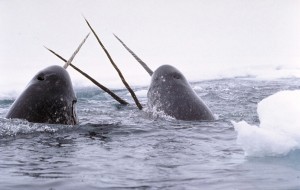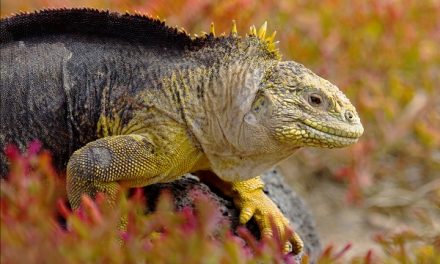
President Biden recently canceled the last seven gas and oil leases in the breathtakingly beautiful Arctic National Wildlife Refuge. ©Hillebrand, USFWS, flickr
Alaska’s Arctic National Wildlife Refuge—one of the world’s most breathtaking natural wonders and culturally significant areas—received some much-needed support recently. In early September 2023, President Biden canceled the last seven gas and oil leases there. This is a victory for the Gwich’in people and other Alaska natives who sustain their families in this special place the same way as their ancestors did for tens of thousands of years. It’s also a win for wildlife, such as the Porcupine caribou and the thousands of migratory birds that call this land and its waters home. And it’s a triumph for the planet.
According to the news agency Reuters, President Biden said in a statement, “As the climate crisis warms the Arctic more than twice as fast as the rest of the world, we have a responsibility to protect this treasured region for all ages.”
And the protection that came in the form of the gas and oil lease cancelations arrived just in time, because we’re now in a 10-year countdown to a sea-ice-free Arctic.

Scientists say that we’re now in a 10-year countdown to a sea-ice-free Arctic. ©Caitlin Bailey, NOAA Ocean Exploration, flickr
Terrifying sea-ice scenes
On June 6, 2023, some astonishing research was published in the international journal Nature Communications: if the world keeps increasing greenhouse gas emissions at its current speed, all sea ice in the Arctic will disappear in the 2030s, an event that could at best be postponed until the 2050s should emissions somehow be reduced.
That prediction—made by scientists from the Division of Environmental Science and Engineering at Pohang University of Science and Technology in South Korea and a joint team of researchers from Canada’s government department Environment and Climate Change Canada and the University of Hamburg in Germany—is a decade earlier than what the Intergovernmental Panel on Climate Change (IPCC) has projected: an ice-free Arctic by the 2040s.
To predict the timing of Arctic sea-ice depletion, the new research team analyzed data from 1979 to 2019. By comparing the results of multiple model simulations with three satellite observational datasets, the scientists confirmed that the two primary drivers of Arctic sea-ice decline over the past 40 years was greenhouse gas emissions resulting from human fossil-fuel combustion and deforestation. The influence of aerosols, solar activities and volcanic events was found to be minimal. Monthly analysis found that increased greenhouse gas emissions were reducing Arctic sea-ice year-round, regardless of season or timing; although September exhibited the smallest extent of sea-ice reduction.

The loss of sea ice could result in more severe cold waves, heat waves and heavy rainfalls worldwide. The thawing of Siberian permafrost would further intensify global warming.
Furthermore, it was revealed that climate models used in previous IPCC predictions generally underestimated declining sea ice, which was taken into account to adjust the simulation values for future predictions. The results showed accelerated decline rates across all scenarios, confirming that Arctic sea ice could completely disappear by the 2030s.
This is expected to have significant impacts not only on the Arctic region but also on ecosystems and human societies worldwide. The reduction of sea ice can result in more frequent occurrences of extreme weather events, such as severe cold waves, heat waves and heavy rainfalls across the globe, with the thawing of Siberian permafrost possibly intensifying global warming further. It’s possible, say the scientists, that we’ll witness terrifying scenes; the kind that so far, we’ve only seen in disaster movies.
Pervasive, poleward-moving predators
The Arctic has already gone through some radical changes with its fauna. For example, marine predators have expanded their ranges into Arctic waters over the last 20 years, due to climate change and the associated increases in productivity.

In the past 25 years, species richness in the Arctic has increased, driven by the northward migration of animals such as seabirds, sharks and whales.
The seas surrounding the Arctic are important ecological and fisheries regions. They are also among the areas most affected by climate change. So, an international team of researchers, including a group from the Arctic Research Center at Hokkaido University in Japan, decided to examine Arctic-wide and regional changes in species composition, richness and associations. Their findings, published in the journal Scientific Reports, show that recent changes in biodiversity were driven by the range expansions of poleward-moving species.
Using data on the occurrences of 69 species of apex predators and mesopredators in eight Arctic areas from 2000-2019 and climate and productivity data across the same period, the scientists mapped species-specific habitat distributions. Their most important finding was that species richness—the number of different species represented in the study regions—has increased over the study period, driven by the northward migration of apex predators such as seabirds, sharks and whales. What long-term consequences that will have for the sustainable use of resources is not yet known.
Beavers, too, are moving north; and we already know that it’s causing a problem. Beavers like to make dams. Those dams cause flooding, which inundates vegetation and turns Arctic creeks and streams into strings of ponds. That surrounding inundated vegetation and those beaver ponds can be devoid of oxygen and rich with organic sediment, which releases methane as the material decays. Methane is also released when organics-rich permafrost thaws as the result of heat carried by the spreading water.

Beavers, too, are moving north. Unfortunately, the dams they make ultimately increase methane gas emissions.
As a greenhouse gas, methane is 25 times more potent than carbon dioxide at trapping heat in the Earth’s atmosphere. It accounts for about 20% of global greenhouse gas emissions, according to the U.S. Environmental Protection Agency. The researchers compared the location of methane hot spots to the locations of 118 beaver ponds and to several nearby unaffected lakes and streams. They analyzed the areas up to 200 feet from the perimeter of each water body and found a significantly greater number of methane hot spots around beaver ponds.
This study, published in July 2023 in Environmental Research Letters, is the first to link Arctic beavers to an increase in the release of methane on a landscape scale.
Immovable Bering Strait bowheads
As sea ice declines in the Arctic, bowhead whales are staying north of the Bering Strait more frequently, a shift that could affect the long-term health of the bowhead population and impact the Indigenous communities that rely on the whales, according to a new study by Oregon State University researchers that was published in the journal Movement Ecology in February 2023.

As sea ice declines in the Arctic, bowhead whales are staying north of the Bering Strait more frequently, which could affect their long-term health and hurt the Indigenous communities that rely on the whales for sustenance. ©Bering Land Bridge National Preserve, Wikimedia Commons
Bowhead whales found in the Pacific Arctic—sometimes called the Bering-Chukchi-Beaufort bowheads based on their migratory patterns—normally winter in the northern Bering Sea and migrate north in the spring through the Bering Strait to the Canadian Beaufort Sea, where they spend summer and fall. They then migrate south again through the strait for the winter. Baleen whales, bowheads are the only cetaceans that live year-round in Arctic and subarctic waters. They use their large skulls to break through sea ice up to 18 inches thick, feed on zooplankton such as copepods and krill, and can reach up to 200,000 pounds and 62 feet in length. They are believed to have life spans of up to 200 years.
Commercial whaling in the 1800s and early 1900s decimated the numbers of bowhead whales found in the Pacific Arctic, and the animals have been listed as endangered under the federal Endangered Species Act since the 1970s. The species has rebounded to about 25,000 whales across four populations. The Bering-Chukchi-Beaufort group, the one studied by the researchers, is the largest.
The bowhead migration route, then, essentially follows the sea ice south through the Bering Strait, which would close as ice formed in the Chukchi Sea. But warming temperatures in the Arctic over the past decade have led to sea-ice decline and kept the Bering Strait increasingly open into the winter months. This lack of ice means that the whales are not leaving the Arctic anymore for the winter, changing the availability of bowheads for the Indigenous people who rely on the whales for cultural, nutritional and spiritual needs. This lack of ice also opens the door for other species to move into the Arctic, resulting in competition for resources and potential predation from species such as killer whales, as sea ice will no longer be able to provide a shelter and communication aid for the bowheads. Entanglement in fishing gear and ship strikes are also likely to increase, since bowheads aren’t typically around vessels, and they may not know how to respond.

The gas and oil lease cancelations in the Arctic National Wildlife Refuge will greatly benefit the planet’s health and the world’s remaining wildlife.
Bold biodiversity boon
You might never see the Arctic National Wildlife Refuge. But what happens there has implications for your life, too. The cancelation of the gas and oil leases is a boon for biodiversity, the planet and the world’s remaining wildlife. This kind of bold action is what’s needed to take on climate change, sustain communities and wildlife, and more than double our nation’s protected lands.
Let’s keep it going. Future generations are depending on us.
Here’s to finding your true places and natural habitats,
Candy


































